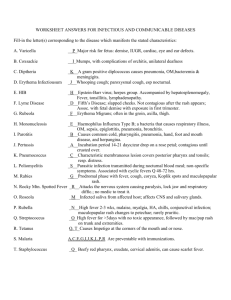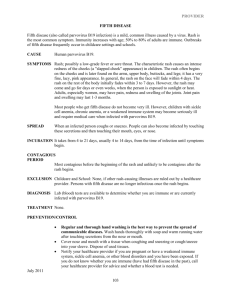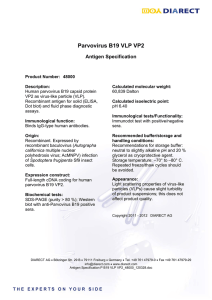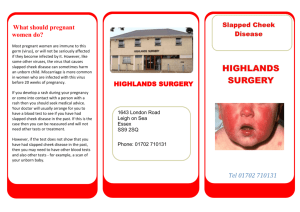Slap Cheek/Fifth Desease
advertisement
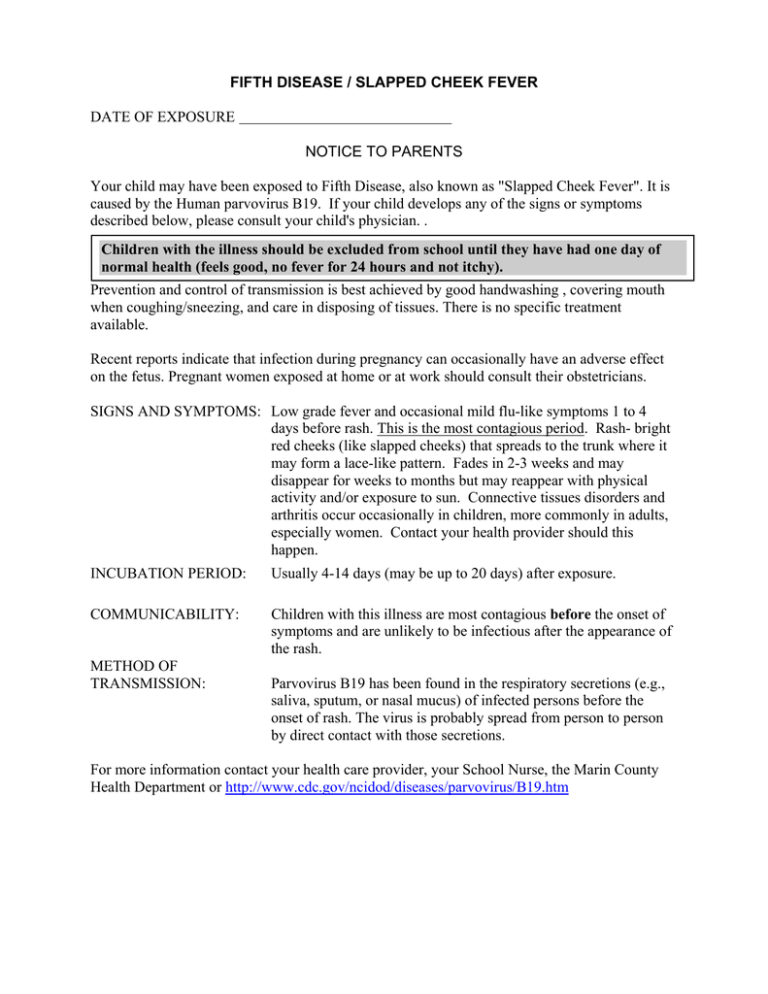
FIFTH DISEASE / SLAPPED CHEEK FEVER DATE OF EXPOSURE NOTICE TO PARENTS Your child may have been exposed to Fifth Disease, also known as "Slapped Cheek Fever". It is caused by the Human parvovirus B19. If your child develops any of the signs or symptoms described below, please consult your child's physician. . Children with the illness should be excluded from school until they have had one day of normal health (feels good, no fever for 24 hours and not itchy). Prevention and control of transmission is best achieved by good handwashing , covering mouth when coughing/sneezing, and care in disposing of tissues. There is no specific treatment available. Recent reports indicate that infection during pregnancy can occasionally have an adverse effect on the fetus. Pregnant women exposed at home or at work should consult their obstetricians. SIGNS AND SYMPTOMS: Low grade fever and occasional mild flu-like symptoms 1 to 4 days before rash. This is the most contagious period. Rash- bright red cheeks (like slapped cheeks) that spreads to the trunk where it may form a lace-like pattern. Fades in 2-3 weeks and may disappear for weeks to months but may reappear with physical activity and/or exposure to sun. Connective tissues disorders and arthritis occur occasionally in children, more commonly in adults, especially women. Contact your health provider should this happen. INCUBATION PERIOD: Usually 4-14 days (may be up to 20 days) after exposure. COMMUNICABILITY: Children with this illness are most contagious before the onset of symptoms and are unlikely to be infectious after the appearance of the rash. METHOD OF TRANSMISSION: Parvovirus B19 has been found in the respiratory secretions (e.g., saliva, sputum, or nasal mucus) of infected persons before the onset of rash. The virus is probably spread from person to person by direct contact with those secretions. For more information contact your health care provider, your School Nurse, the Marin County Health Department or http://www.cdc.gov/ncidod/diseases/parvovirus/B19.htm

